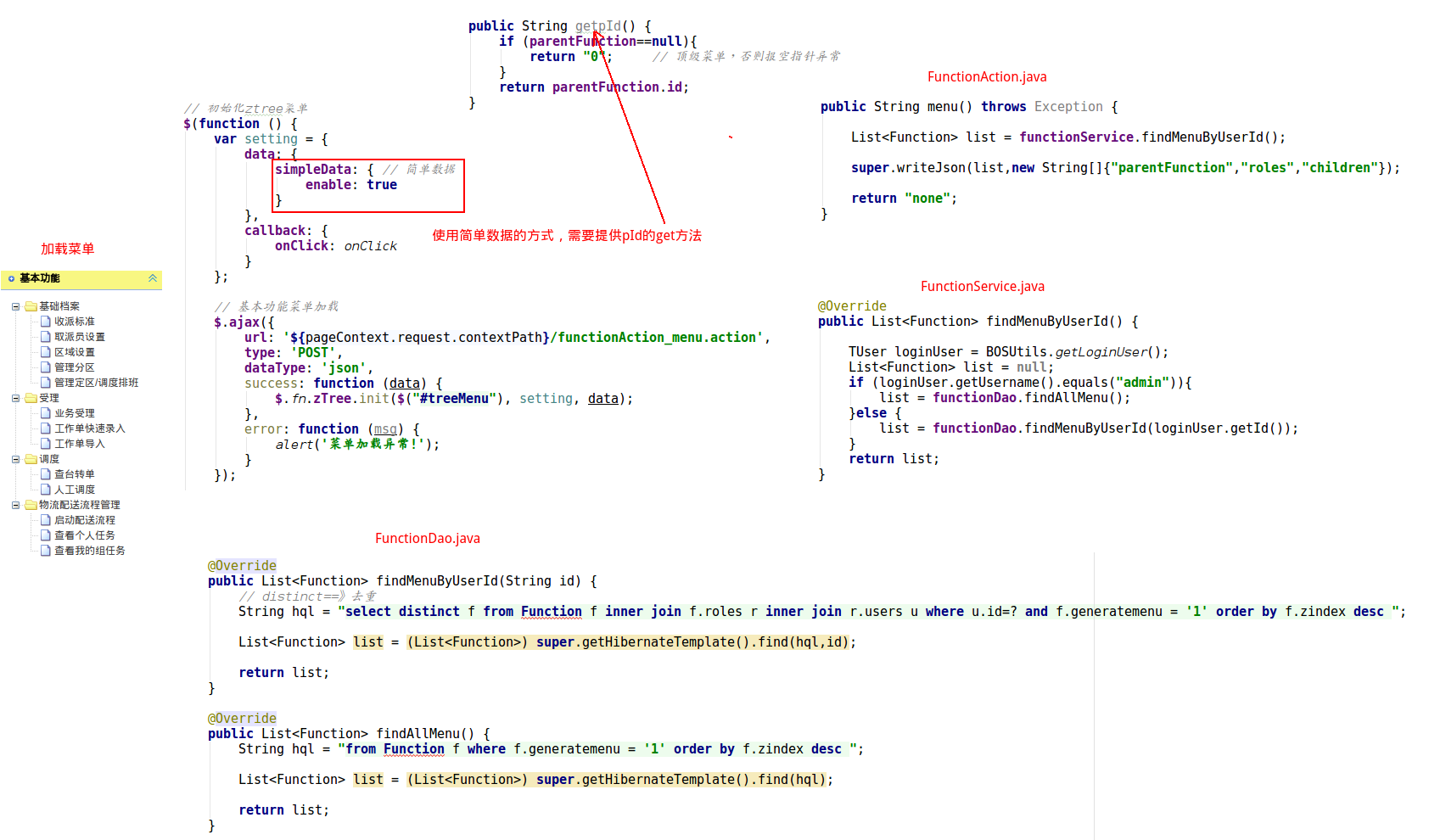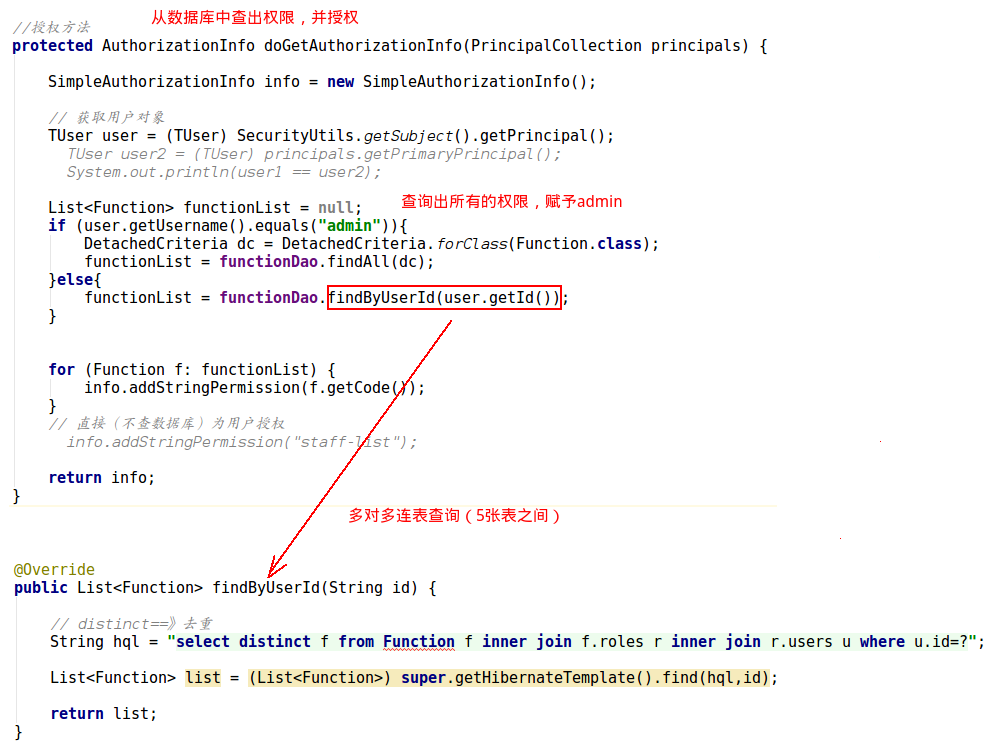1、多对多添加方法
@Override
public void add(Role model, String functionIds) {
// 1.先将角色保存到数据库
roleDao.save(model);
// 2.为角色添加权限(一定要坚持映射文件中是否inverse)
if (StringUtils.isNotBlank(functionIds)){
String[] functionIdList = functionIds.split(",");
for (String fid : functionIdList) {
// 可以自己new一个Function对象,也可以用functionId获取Function对象
Function function = new Function();
function.setId(fid);
model.getFunctions().add(function);
}
}
}
2、多对多页面需要字段问题(不多的话直接提供get方法)
在多对多关系时,由于比较复杂,所以我们可以为页面指定的字段加上一个get方法

3、修改Realm中授权方法(查询数据库)
多对多连表查询

1 //授权方法 2 protected AuthorizationInfo doGetAuthorizationInfo(PrincipalCollection principals) { 3 4 SimpleAuthorizationInfo info = new SimpleAuthorizationInfo(); 5 6 // 获取用户对象 7 TUser user = (TUser) SecurityUtils.getSubject().getPrincipal(); 8 // TUser user2 = (TUser) principals.getPrimaryPrincipal(); 9 // System.out.println(user1 == user2); 10 11 List<Function> functionList = null; 12 if (user.getUsername().equals("admin")){ 13 DetachedCriteria dc = DetachedCriteria.forClass(Function.class); 14 functionList = functionDao.findAll(dc); 15 }else{ 16 functionList = functionDao.findByUserId(user.getId()); 17 } 18 19 20 for (Function f: functionList) { 21 info.addStringPermission(f.getCode()); 22 } 23 // 直接(不查数据库)为用户授权 24 // info.addStringPermission("staff-list"); 25 26 return info; 27 }

1 @Override 2 public List<Function> findByUserId(String id) { 3 4 // distinct==》去重 5 String hql = "select distinct f from Function f inner join f.roles r inner join r.users u where u.id=?"; 6 7 List<Function> list = (List<Function>) super.getHibernateTemplate().find(hql,id); 8 9 return list; 10 }
但这样有一个缺陷,每次访问一个页面都会重新进行数据库查询;所以要整一个缓存
4、ehcache是专门缓存插件,可以缓存Java对象,提高系统性能。
第一步:在pom.xml文件中引入ehcache的依赖

第二步:在项目中提供ehcache的配置文件
<ehcache xmlns:xsi="http://www.w3.org/2001/XMLSchema-instance" xsi:noNamespaceSchemaLocation="../config/ehcache.xsd">
<diskStore path="java.io.tmpdir"/>
<defaultCache
maxElementsInMemory="10000"
eternal="false"
timeToIdleSeconds="120"
timeToLiveSeconds="120"
overflowToDisk="true"
maxElementsOnDisk="10000000"
diskPersistent="false"
diskExpiryThreadIntervalSeconds="120"
memoryStoreEvictionPolicy="LRU"
/>
</ehcache>
第三步:在spring配置文件中配置缓存管理器对象,并注入给安全管理器对象


1 <!--配置安全管理器--> 2 <bean name="securityManager" class="org.apache.shiro.web.mgt.DefaultWebSecurityManager"> 3 <property name="realm" ref="bosRealm"/> 4 <!--注入缓存管理器--> 5 <property name="cacheManager" ref="cacheManager"/> 6 </bean> 7 8 <!--注册缓存管理器--> 9 <bean name="cacheManager" class="org.apache.shiro.cache.ehcache.EhCacheManager"> 10 <!--注入ehcache配置文件--> 11 <property name="cacheManagerConfigFile" value="classpath:ehcache.xml"/> 12 </bean>
5、加载左侧菜单


